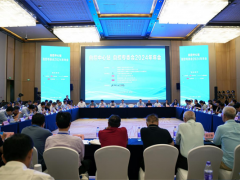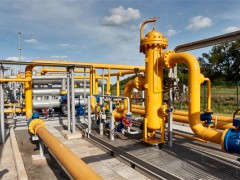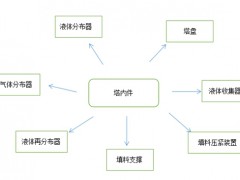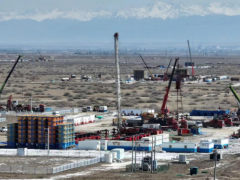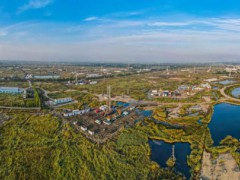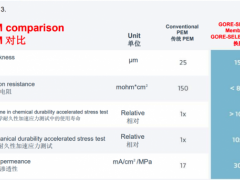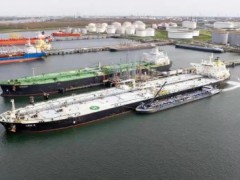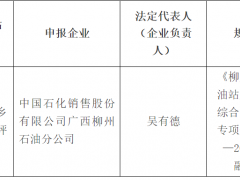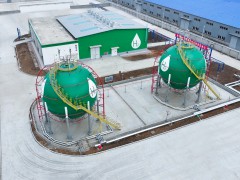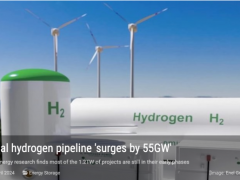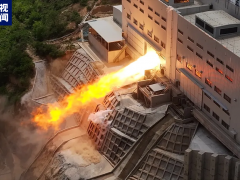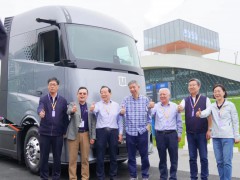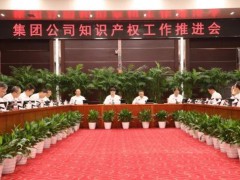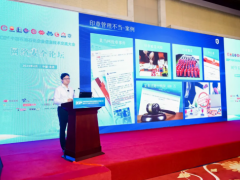• 绿色氢工业被认为是任何全球能源转型的关键部分,欧洲和亚洲都在积极追求发展绿色氢工业
• 壳牌公司最近启动了中国最大的电解槽之一,而韩国工业巨头晓星集团计划向绿色氢能源投资8.35亿美元
• 在欧洲,欧盟已经在跟踪整个欧洲大陆的氢数据,而西班牙则率先计划安装4吉瓦的绿色氢产能
据美国油价网报道,长期以来,欧洲和亚洲一直在争夺氢能源的主导地位,但现在双方的竞争是明确建立绿色氢产能。 随着壳牌公司宣布在中国启动世界上最大的氢电解槽之一,欧洲强国将紧跟壳牌公司。 中国和韩国都有发展绿色氢燃料的重大计划,但欧洲国家也不甘落后。 早在新冠肺炎疫情促使几个世界政府从化石燃料转向可再生能源之前,中国和欧盟就在争夺氢燃料的霸主地位。 2020年,欧盟制定的“绿色协议”强调了一个三步计划,以支持该地区绿色氢工业的发展——包括到2024年前在多个行业实施绿色氢生产和消费,到2030年前创建相互连接的“氢谷”, 以及建立一个大型的欧洲氢基础设施。
与此同时,中国的电解槽技术发展正迅速赶上西门子和蒂森克虏伯等欧洲公司的发展。 此外,很明显,当机会出现时,中国有能力迅速实施产业政策来主导市场。 中国开发其氢技术只是时间问题,但两年前谁也不知道谁会领先。
日前,壳牌公司宣布中国最大的绿色氢电解槽之一落成,并及时投产,以迎接2022年2月开幕的第24届冬季奥运会。 这台20兆瓦的电解槽位于中国河北省张家口市,将为燃料电池汽车生产绿色氢,最初用于冬季奥运会期间的车辆,之后用于商业和公共交通。
壳牌公司综合天然气、可再生能源和能源解决方案总监瓦艾勒·萨万表示,这个氢电解槽是“迄今为止我们产品组合中最大的氢电解槽。”此外,“我们在中国的氢供应链上看到了各种机会,包括生产、储存和运输,”萨万如是说。
几个灰色氢项目——从化石燃料中提取的氢——已经在中国各地投入运营。 但是,为了发展可再生能源领域和实现经济脱碳,中国现在正努力摆脱灰色氢,转而支持完全可再生的绿色氢。
中国的这个新电解槽仅用了13个月的时间就建成,它使用陆上风电作为电源,支持张家口向低碳能源的转型。 这表明,如果政府和私营能源公司愿意投资,中国氢工业的潜力将是巨大的。
但中国并不是唯一一个发展氢工业的亚洲国家。 在韩国,产业巨头晓星集团计划在本国全罗南道投资8.35亿美元建设绿色氢气设施。 其目标是开发一个10兆瓦的制氢厂,将水分解成氧气和燃烧清洁的氢气,年产20万吨绿色氢,成为国内最大的制氢厂。 现代、英力士、SK集团也对韩国的绿色氢气产业表达了关注和兴趣。
欧洲也具有与亚洲同样的宏大抱负,而其投资规模也同样庞大。 在西班牙,雷普索尔公司目前正将赌注押在本国的绿色氢未来上,计划投资44亿美元用于绿色氢的生产和使用。 这家西班牙能源巨头正领导着一个由33家公司和组织组成的财团,旨在发展西班牙的绿色氢行业。 这些资金将用于到2025年前安装500兆瓦的绿色氢产能,到2030年前安装2吉瓦的绿色氢产能,这是西班牙政府总目标4吉瓦的一半。
并不是只有欧盟和西欧才有发展氢工业的潜力。 在乌克兰,由于该国拥有丰富的水资源,以及优于平均水平的太阳能和风能潜力,绿色氢气生产有着巨大的机遇。 此外,乌克兰的,连接欧洲、俄罗斯和亚洲的地理位置也可能使其成为战略出口枢纽。 然而,这将需要对乌克兰老化的电网系统进行大量投资,可能高达数十亿美元,同时还需要说服该国的天然气生产商,让他们相信这是一项值得投资的项目。 当然,所有这一切都取决于其与俄罗斯目前的紧张关系能否缓和。
在绿色氢能源方面,欧洲不太可能让亚洲占据主导地位,因为许多人认为,在欧洲有潜力启动运营并满足需求的情况下,向欧洲进口这种能源将是疯狂的。 Acciona能源公司首席执行官拉斐尔·马特奥解释说:“可再生能源和绿色氢能源的优势在于,它是本地的,使用自主资源——因此每个国家都可以确保自己的低碳能源,价格在30年里保持稳定——如果你有这些资源,进口它们是疯狂的举动。”
现在,欧盟正在确保该地区的氢数据准确上报,作为其能源开发战略的一部分。 欧盟委员会计划要求所有欧盟国家从今年2月起提供更详细的能源统计数据,包括每个国家的氢项目信息。 现在必须报告氢的使用情况和种类,为欧盟委员会提供更好地监测和实施欧盟氢战略所需的数据。 这将加强该地区在发展绿色氢能源领域的共同努力,这是亚洲迄今尚未做的事情。
至于欧洲和亚洲在绿色氢能源的主导地位上的竞争,目前还没有定论。 欧盟已经在制定联合战略,并通过在各成员国收集数据建立监测和战略实施框架。 此外,欧盟的几个国家和欧洲的能源公司已经在大力投资开发绿色氢项目。 然而,随着中国最大的电解槽投产运行,它显示出中国有能力以多么快的速度发展其新产业。 此外,韩国也在寻求资助绿色氢的大规模生产,这表明亚洲不是只有一个国家的地区,亚洲可以迅速成为世界绿色氢的领导者。
李峻 编译自 美国油价网
原文如下:
The Green Hydrogen Revolution Is Sweeping Europe And Asia
· The green hydrogen industry is considered a key part of any global energy transition, and both Europe and Asia are aggressively pursuing its development
· Shell recently launched one of the largest electrolyzers in China while Korean industrial giant Hyosung has planned an $835 million investment in green hydrogen
· In Europe, the EU is already tracking hydrogen data across the continent while Spain is leading the way with its plans to install 4GW of green hydrogen capacity
Europe and China have long been battling it out for hydrogen dominance, but now the race is on to build up green hydrogen capacity specifically. As Shell announces the launch of one of the world’s largest hydrogen electrolyzers in China, European powers will be hot on its tail. Both China and Korea have major plans for green hydrogen, but European countries aren’t far behind. Even before the pandemic encouraged several world governments to drive the transition away from fossil fuels to renewable alternatives, China and the EU were vying for hydrogen supremacy. In 2020, the EU’s ‘Green Deal’ highlighted a three-step plan to support the development of the green hydrogen industry across the region - including the implementation of green hydrogen production and consumption across several industries by 2024, the creation of interconnected ‘hydrogen valleys’ by 2030, and the creation of a large European hydrogen infrastructure.
Meanwhile, electrolyzer technology in China was quickly catching up with the developments of European companies such as Siemens and Thyssenkrupp. In addition, it became clear that China was capable of implementing industrial policies swiftly to dominate the market when opportunities emerged. It was only a matter of time until China developed its hydrogen technology, but no one knew two years ago who would come out on top.
Last week, Shell announced the inauguration of one of the largest green hydrogen electrolyzers in China, up and running in time for the Winter Olympics in February. The 20-megawatt electrolyzer, situated in Zhangjiakou, Hebei Province, China, will produce green hydrogen for fuel cell vehicles, initially for vehicles used during the games and afterward for commercial and public transport use.
Shell’s director of integrated gas, renewable, and energy solutions, Wael Sawan, stated of the development that the electrolyzer is “the largest in our portfolio to date.” In addition, “We see opportunities across the hydrogen supply chain in China, including its production, storage and shipping,” he said.
Several grey hydrogen projects – hydrogen derived from fossil fuels – are already in operation across China. But in an effort to develop its renewable energies sector as well as decarbonize its economy, China is now striving to phrase out grey hydrogen in favor of fully renewable green hydrogen.
The new electrolyzer, which took just 13 months to build, uses onshore wind power as its energy source, supporting Zhangjiakou’s transition to low-carbon energy. This shows the huge potential for China’s hydrogen industry if the government and private energy firms are willing to invest.
But it’s not the only Asian country to be developing its hydrogen industry. In Korea, industrial giant the Hyosung Group is planning to invest $835 million in green hydrogen facilities in the South Jeolla Province of the country. The aim is to develop a 10MW plant that will split water into oxygen and clean-burning hydrogen with an annual output of 200,000 metric tonnes of green hydrogen, making it the largest in Korea. Hyundai, Ineos, and the SK Group have all also expressed interest in developing Korea’s green hydrogen industry.
Europe’s ambitions are just as lofty and its investments just as large. In Spain, Repsol is currently betting on the country’s green hydrogen future, with plans to invest $4.4 billion in green hydrogen production and usage. The energy firm is leading a consortium of 33 companies and organizations with the aim of developing Spain’s green hydrogen sector. The funds will go toward the installation of 500MWs of green hydrogen capacity by 2025 and 2GW by 2030. This marks half of the Spanish government's overall target of 4GW.
And it’s not just the EU and Western Europe that have the potential to develop their hydrogen industries. In Ukraine, there is a significant opportunity for green hydrogen production thanks to the country’s large water resources and better-than-average solar and wind potential. Further, its location could also make it a strategic export hub, connecting Europe with Russia and Asia. However, it will require a substantial investment in Ukraine’s aging grid system, potentially billions, as well as convincing the country’s gas producers that it’s a worthwhile investment. All of that, of course, is reliant on its current tensions with Russia to de-escalate.
Europe is unlikely to let Asia take the reigns when it comes to green hydrogen, with many believing it would be crazy to import the energy source to Europe when it has the potential to get its operations up and running in line with demand. Rafael Mateo, CEO of Acciona Energía, explains “The advantage of renewables, and the advantage of green hydrogen, is that it’s local, using autonomous resources — so each country can secure its own low-carbon energy at stable prices for 30 years — it’s crazy to import if you have these resources.”
And now the EU is making sure that the region’s hydrogen data is reported accurately as part of its strategy for the development of the energy source. The European Commission has plans to require all EU states to deliver more detailed energy statistics from February this year, including information about each country’s hydrogen projects. Hydrogen use and types must now be reported, providing the Commission with the data required to better monitor and implement the EU's hydrogen strategy. This will enhance the region’s joint efforts to develop the green hydrogen sector, something that Asia has yet to do.
The jury’s still out when it comes to Europe and Asia’s battle over green hydrogen dominance. The EU is already establishing joint strategies, as well as monitoring and strategy implementation frameworks through data gathering across member states. In addition, several countries across the region and European energy firms are already investing heavily in the development of green hydrogen projects. However, as China’s largest electrolyzer gets up and running, it shows just how quickly the country is capable of developing its new industries. In addition, Korea is also looking to fund the widescale production of green hydrogen, showing that Asia is not a one-state region and could quickly become a world leader in green hydrogen.
免责声明:本网转载自其它媒体的文章,目的在于弘扬石化精神,传递更多石化信息,并不代表本网赞同其观点和对其真实性负责,在此我们谨向原作者和原媒体致以敬意。如果您认为本站文章侵犯了您的版权,请与我们联系,我们将第一时间删除。

